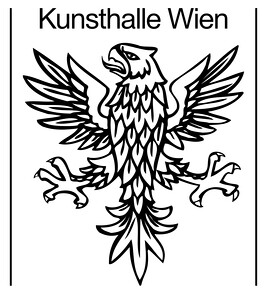October 25, 2018–February 17, 2019
Museumsquartier, Museumsplatz 1
1070 Vienna
Austria
Hours: Tuesday–Sunday 10am–6pm,
Thursday 10am–8pm
It all began with a brief sketch for a possible film. “The glaciers of Antarctica are moving in our direction at a rate of three millimeters per year,” the director Michelangelo Antonioni noted in the 1960s. “Calculate when they’ll reach us. Anticipate, in a film, what will happen.” Antonioni’s Antarctica is a condensed image for a life in which genuine feelings are buried beneath a glacier of rigid convention, a vision of society that was dominant in post-war European film, and continues to inform the work of contemporary filmmakers. Ever sensitive to history’s shifting winds and changing social climates, visual art, too, is rife with haunting portraits of the cooling of affect in the age of consumerism.
Alienation is a term often employed to describe this phenomenon. Encapsulating a complicated state of affairs in a single word, it is nonetheless a paradoxical category. The experience of alienation reflects profound historical transformations—from secularization, industrialization, and the growing influence of technology to today’s radical individualization. At the same time, it designates a fundamental “cooling” of the subject’s relationship with both her/his environment and her/his self. A salient characteristic of modernity, alienation describes a positively systemic disruption that distorts the relations humans have to the world around them, as well as to their own beliefs and aspirations.
Summed up in a formula, alienation denotes a paradoxical state of simultaneous involvement and disinvolvement. The subject increasingly confronts relationships, institutions and work activities as alien entities in which she/he no longer recognizes herself/himself. That is to say—alienation is a peculiar kind of relation, not a non-relation, but “a relation of unrelatedness,” in the words of philosopher Rahel Jaeggi, a kind of separation in the mode of inseparability. Well over a century ago, the works of Édouard Manet, Charles Baudelaire’s “painter of modern life,” similarly sketched the singularization of the individual in an ever more fragmented society. Compositionally united in a group, Manet’s figures often seem to find themselves suddenly alone, strangely disassociated from what would appear to be familiar settings. In Manet’s era of high capitalism, the dominant economic system of the late nineteenth century, long-established relationships drifted apart without coming entirely undone. Akin to scenarios of wish fulfilment that remain forever elusive, they continue to haunt our world as the mainsprings of a restless quest for what was probably never real: an immediate union with our environment and our selves.
The exhibition Antarctica gathers art that probes the ramifications of this configuration of simultaneous involvement and disinvolvement, with an emphasis on more recent positions in contemporary art. The works examine the interplay between identity and disidentity, and the disunion of a person and their role prompted by the awareness of self-alienation in modernity, as well as the (ostensible) absence of alienation from today’s “new workplaces.” Studies of modes of behavior adapted to the cold contrast with other works that speak to an intense, even overheated, self-absorption—which ultimately marks merely another facet of the contemporary experience of alienation.
Antarctica focuses in on photography and film, media of representation that are said to be distinguished by a privileged relation to reality. As it turns out, contemporary portraiture tends to reveal not so much the sitters’ individuality as rather the interrelation between the subject and role: the assimilation of prefabricated patterns as a blueprint for social coexistence. Other works in the exhibition illustrate the hallmark of contemporary consumer culture: a digitally perfected normalcy—elaborately staged and yet banal. Conspicuously, blemishes of any kind have been removed. Behind the sometimes almost painfully perfect surface looms the spectral void that opens up when the visualization and production of a world abandons all mimetic depiction in favor of mere resemblance to the real world.
Curators: Vanessa Joan Müller, Nicolaus Schafhausen
Artists: Viltė Bražiūnaitė / Tomas Sinkevičius, Burak Delier, Buck Ellison, Isabella Fürnkäs, Eva Giolo, Thibaut Henz, Jan Hoeft, Hanne Lippard, Joanna Piotrowska, Jeroen de Rijke / Willem de Rooij, Jana Schulz, Andrzej Steinbach, Ingel Vaikla, Peter Wächtler, Ian Wallace, Tobias Zielony
Stay connected:
Please check our website for regular updates on our program.
For further information please contact: Susanne Fernandes Silva
T +43 (0) 1 5 21 89 1221 / presse [at] kunsthallewien.at



